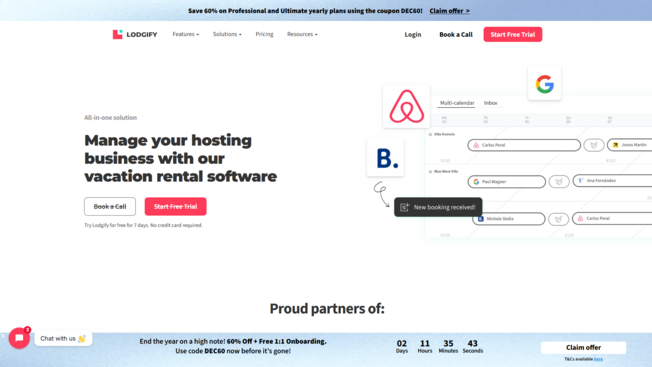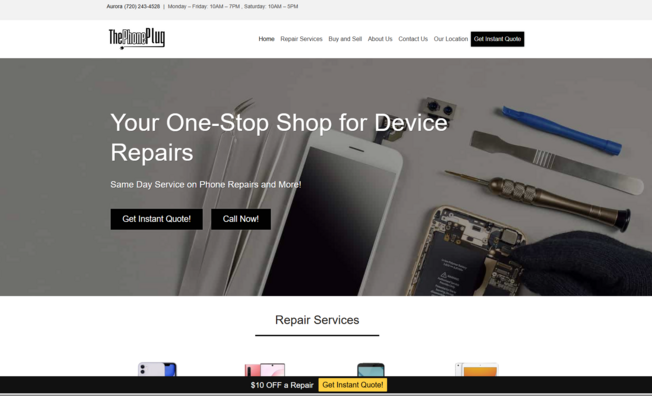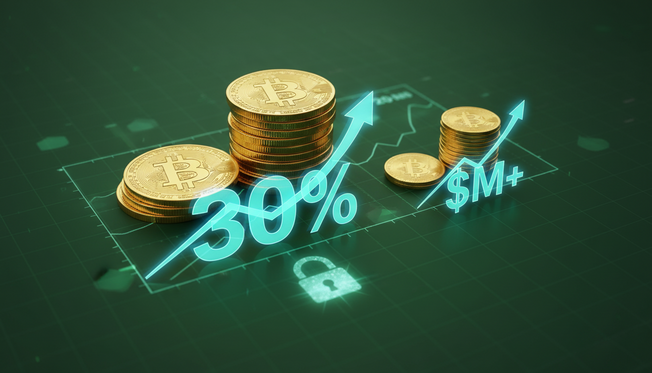
This week, we have a feature-length article straight from Simon Zutshi, all about how you can easily replace your income with a couple of properties by using Houses of Multiple Occupation (HMOs).
I'm not only going to teach you how you can replace your income with just three properties, in fact, I'm going to give you some examples of some of my mastermind students who've achieved this with just one property.
I was speaking to one of my new virtual most my students this week, who said that he had had a rental property for the last six years, and he could not imagine ever replacing his income with property income, because that one property was making him just £75 profit per month.
Someone recommended that he read my book Property Magic, and he came to realise that he needed to change the way he was investing in property. He had one single buy-to-let property, which is what most investors use, it was only going to make him a small amount of money, and he'd probably need about 50 of those to replace his income. However, by using HMOs, Houses of Multiple Occupation, which is a more advanced strategy, they should make you around £1,000 per month per property.
So that means for the average person who probably earns less than £3000 a month, just three of these properties, when done correctly, will more than replace your income. That's why this is such a powerful strategy.
The Different Types of HMO Property
Now there are three different types of HMO, and I'm going to run through each of these.
One is called a 'Mini-MO', we also have standard HMOs, and we have a 'Mega-MO' as well. I'll explain each of these, what's involved, and I'm going to give you some actual case studies, so they bring them to life, and I'm going to talk about the four different types of tenants you get in HMO's as well. Now, although they're more advanced strategies, it's perfectly possible for your first property to be an HMO, once you know what you're doing.
My first rental property was in fact a Mini-MO, which is normally a property for three or four tenants. The technical definition of an HMO is a property that has three or more unrelated tenants. So could be a couple living together who are not married, and a friend renting a room from them, that would technically be an HMO.
Now, these smaller HMO's, they often do not require a mandatory HMO licence, because the national guideline is five or more tenants, however, you need to check with your local council, because some councils say, "Well, if it's got three or more people, then it needs to have a licence." Even if the property doesn't have a licence, I believe you should make sure it has all the safety requirements, because you have a moral and ethical and legal responsibility to make sure you're looking after your tenants. Now, my first property was rented to three students, and it made about £500 profit per month, which is the minimum you really want to make from an HMO.
"...just three of these properties, when done correctly, will more than replace your income."
Normally in an HMO the bills are included. So, the more people you have in that property, the further you can spread the cost of the bills amongst the tenants.
My thoughts are that if you're doing a mini-MO, it only really works If you've got a property that might be less than £100k in value, which means you've got a very low mortgage.
So, let's say, you're renting out three rooms, and it's a property up north and you're getting £400 pounds per room, per month. Four rooms at £400 would be £1,200 per month in income. Your bills might be £400, your mortgage might be £300 pounds, and so you're going to make a £500 profit on that property.
Now, if you have one empty room, you still make a profit, but you need to focus on keeping the rooms full as much as possible, because any empty rooms are just profit going down the drain. So Mini-MOs can work in certain areas where the property is quite cheap.
However, I prefer, what I call a standard HMO, which is five or six tenants, ideally, six tenants because that extra tenant doesn’t really cost any more in terms of having them in the property, so the bills aren't any more, but you get a whole extra room rent, and that's pretty much all profit. So, with a five or six bed HMO, if you're doing things correctly, again, you should be making about a thousand-pound profit per month.
Now, these properties work everywhere in the country, they work where you've got a high demand for work.
You want to have lots of employment in the area, and when you have employment, people want to live in the area. Living in an HMO is very cost effective, it's more cost effective than someone living in a studio or apartment on their own. Not only do they pay the rent, but they’ve also got to pay all the bills as well, which is usually at least £300. Now, some people say, "Oh, well, it doesn't work in expensive places like London."
So let me give you an example of one of my mastermind graduates who I was talking to this week.
Mega HMO Deal in London
This is someone called Jennifer. She lives in Kingston in Southwest London, and she didn't really want to invest outside of her area, she wanted to invest in Kingston, where she was living, where she knew the area. Even though she wanted other people to ultimately manage her property for her, she wanted to invest in a local area.
She did some research and found that there were HMOs in Kingston, but there were very average. And, and here's an important point, if you want to make sure you fill your properties quickly, and achieve a very good rent, you need to make sure that you are much better than the average that's available on the market. That's really important, because you know what? I think that there is an oversupply of HMOs generally. But it's an oversupply of very average properties. If you have a better than average property, not only will you rent it quickly, but you will also achieve a much higher rental income.
So, Jennifer did her research, and she was able to buy a property that needed some work doing to it, it was a probate property. Someone had died, they'd left it to the family, and she bought it for £750,000. Based in London, she spent £221,000 on the refurb, including all the furniture, and made it look absolutely fantastic.
The cost was just over a million, but the end value was a million one hundred and fifty thousand. So, she added a lot of extra value to this property to create this seven bed HMO. Now because it was seven beds, it also needed planning permission for a change of use, this is what's called Sui Generis.
Jennifer now rents out these seven rooms, and she receives £1,000 rental income per month per room. So, in other words, she gets £7,000 pounds rent every single month. By the time you take off the bills, she makes £3,500 per month profit, that's after the bills, that's after the maintenance, that's after the mortgage, after everything. You might think, "Well, maybe she's lucky. That's a one-off fluke, she's got one property like that." No, she's now got three properties like that. So, she makes £10,500 per month profit from her three properties which is £126,000 profit per year. This is just a seven bed HMO in a very good area.
Now, this is close to the kind of income you get from a mega HMO, and a mega HMO is where you often have a much bigger HMO typically 10 or more rooms, and they can be real life changing deals. So let me give you two examples of mega HMOs.
If you are selling the property, the more value you add, then the higher sale price you will achieve.
If you plan to retain the property to rent out long term, you could refinance it to remove some, or all the money you have put in. This means you have a property with none of your own money invested. When you re-finance the property to get all your money back out, you can then use it to buy another property. Alternatively, if you borrowed the money in the first place, you could return it to the person you borrowed from.
"If you have a better than average property, not only will you rent it quickly, you will achieve a much higher rental income."
HMO Property Investing Using Landlord Letters
One of my students Dr. Tim Purcell, who lives in Bristol, spotted a to-let sign outside a property in a part of Bristol called Clifton. You might have to be familiar with the Clifton Suspension Bridge, a very popular image. If you look at an image of Clifton Suspension Bridge, on the right-hand side, you'll see there were some lovely Georgian four-story properties. Tim used to drive past these every day on his way to work. He was a GP, and he'd, he'd think to himself, "I wish I had one of those properties," but he never thought in his wildest dreams he'd be able to afford a property, let alone make it work as a rental property.
But as he was driving past, he noticed there was a to-let sign outside. On my Mastermind programme, I mention that if there's a to-let sign, maybe the landlord has not let out the whole property. They may be struggling. So, you should reach out to them to see if you could potentially take the property on.
He went onto the land registry, he found out the owner was a company based up in the Midlands. So, he sent them a landlord letter, which is a great way to find landlord deals. He discovered that this company that mainly had properties in the Midlands, had one or two properties dotted around, and one of them was in Bristol. Every time they had a problem with this property, they had to send someone from the Midlands down to Bristol. That really wasn't a a very good use of time. It was expensive. So, they were thinking about selling this property, and Tim's letter arrived at just the right time.
He met up with the owner in Bristol, and the owner shared that it was a very popular property, they'd always been able to rent it out very easily. Tim noticed, he didn't tell the owner, but he noticed that the rents they were charging, were a lot lower than they should do. That's why they were renting it so quickly.
It was a student property, a 16 bed HMO, and they'd rent it very, very quickly, but it was just too much hassle for them. So, Tim agreed to buy. It was off market. He bought it for £720,000s. Again, it's a big property in an expensive area. But all he did was lift the rents. You see the company were charging Midland rents, which are £350, and Tim knew he should be able to get £500 to £550 in Bristol. He just lifted the rents by 30%.
That property now gives him £4,500 profit per month from one property, he had to put £100,000 in, but he had run out of his own money by then. So, he used other people's money. This wasn't his first deal, so he had a track record and experience, and he gets a 26% return on that money.
This is a property that has got none of his own money in and the value has gone up over the last few years. He's identified that they can refurbish it, and improve it, and extend it. He's going to be able to spend probably about £150,000 on it, refinance it, because he's added value and pulled all the money out.
David's 9 Bed HMO With 2 Apartments
Let's talk about David. David Granite who lives in Oxfordshire. He found a five bed B&B on the market on Rightmove. There are lots of them available right now.
So, David spotted this property and he realised he could convert it into a nine bed HMO with two apartments on the side as well. And that’s exactly what he did. He bought it for £540,000 pounds, a slight discount on the value, and spent 220 on a refurb. Again, he borrowed that money from someone else. The total value once the work was done was £980,000.
He re-mortgaged it, he couldn't get all of his money out, and had to leave some money in. But this now makes him £4,500 profit after bills, mortgage, every single month. When it comes to the money left in, he is getting a 59% ROI. In other words, that means all of his money is going to come back.
Now your first deal is probably not going to be a mega HMO like this, making you £4000 profit a month. But it could certainly be one making you £1,000 profit a month. If you have properties that make you a thousand-pound profit every single month, how many of these would you need to replace your income? For the average person, three of these properties would be enough. And you could absolutely do that in a year or two.
So, a year or two from now, maybe you could completely replace your income. And I hope that this article has really stimulated your thinking.
Looking for more free training? More videos are released every week on the Simon Zutshi YouTube channel. Subscribe today for the latest property investment tips & secrets.

















Leave a Reply